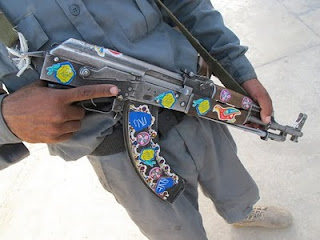

The gun's descendants would change the face of battle, insurgency, and terrorism. In The Gun, by C.J. Chivers, a solidly researched and written book, this evolution is traced. Here is part of a review, "Armed for a Fight," by Andrew Exum in The Wilson Quarterly about "a light assault rifle of devastating simplicity and durability. That assault rifle, the Avtomat Kalashnikova, or AK-47, has killed orders of magnitude more people than atomic weaponry, though its effect on the battlefield is never mentioned in the same breath as that of nuclear weapons. A modified design is still in production today." Here are other points/excerpts:
~The machine gun was introduced to Western armies in the 19th century over the objection of the armies themselves. Senior officers in Western armies—most especially, perhaps, those of Britain and the United States—found machine guns ungentlemanly, and failed to imagine how automatic weaponry might be used to devastating effect both against and in support of their own troops.
~In World War I, the machine gun in the hands of the indigenous defenders of German East Africa (now Tanzania) helped to repel a British assault, shaming British officers who were defeated by black African troops. Like the rifle before it, the machine gun was first effectively employed by colonial powers but then leveled the playing field between them and their would-be subjects.
~The most important lessons from [The Gun, by C.J. Chivers] concern not the effect of the AK-47 on the modern battlefield, but rather the ineptitude displayed by the British and U.S. armies in adapting to automatic weaponry in World War I, and later by the U.S. Army in developing a capable alternative to the AK-47. More
